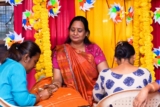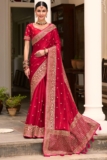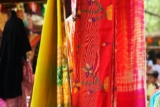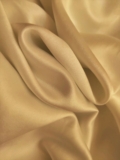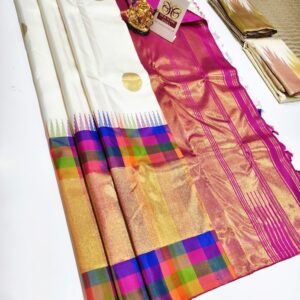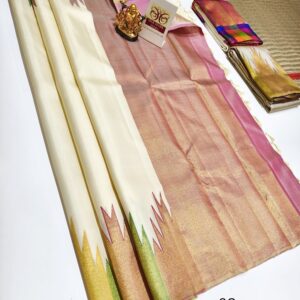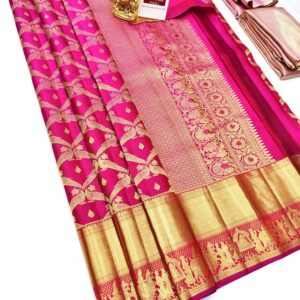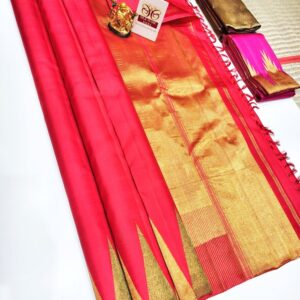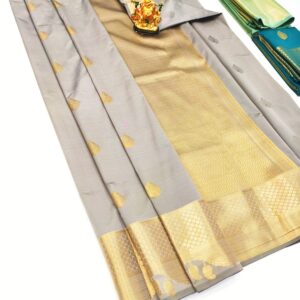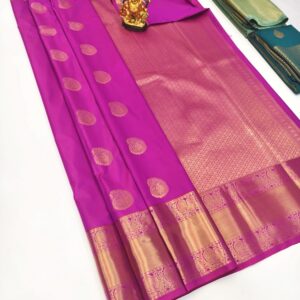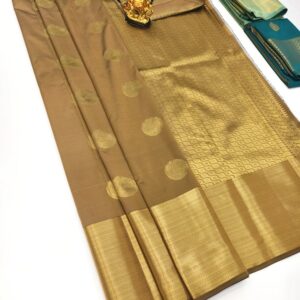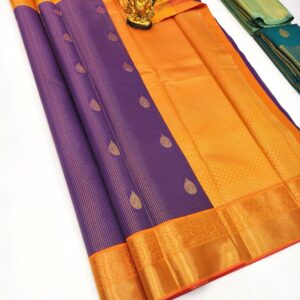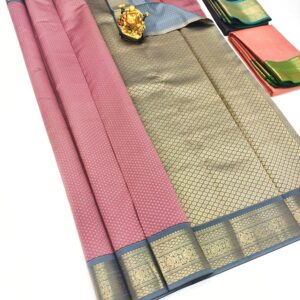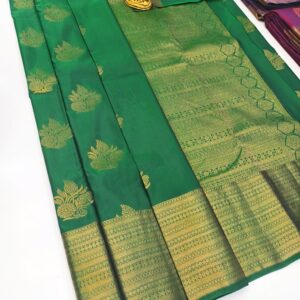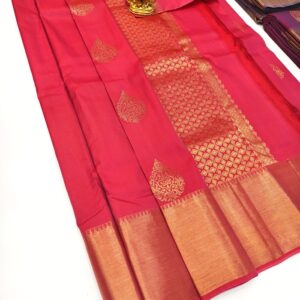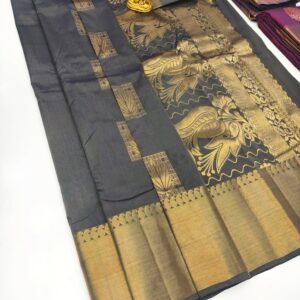Rakshabandhan is not just about tying the sacred rakhi, it’s a celebration of love, family bonds, laughter, and togetherness. And while gifts and sweets make ...
Chiffon sarees are the epitome of elegance, grace, and lightweight charm. Often worn for formal occasions and parties, these sarees drape effortlessly, adding ...
An In-depth Look into Elegance, Craft, and Cultural Significance When it comes to sarees, India offers a rich tapestry of choices that cater to every ...
Sarees have long been the epitome of grace, tradition, and beauty in Indian culture. Yet, over the decades, this classic garment has seen numerous ...
South Indian weddings are a beautiful celebration of culture, tradition, and elegance and nothing embodies this more than the classic silk saree. Whether ...
Mother’s Day is a special occasion dedicated to honoring the women who raised us, stood by us, and helped us become who we are today. While words often fall ...
The saree a timeless piece of clothing that embodies grace, elegance, and cultural heritage has adorned Indian women for centuries. But did you know that the ...
Silk sarees have always held a timeless charm in Indian fashion. Elegant, regal, and rich in tradition, they are more than just garments, they are cultural ...
A wedding in South India is incomplete without the luxurious swish of silk. And when it comes to bridal silk sarees, nothing rivals the timeless grandeur of a ...
A black silk saree is a timeless piece in any Indian wardrobe. Elegant, bold, and commanding, it exudes confidence and class. Whether it’s a plain black ...
Silk sarees are much more than just exquisite garments; they are a canvas of cultural stories, traditions, and artistry. Worn across India for centuries, ...
When it comes to traditional Indian attire, especially sarees, silk is often considered the epitome of grace, luxury, and elegance. However, in today’s ...
- « Previous Page
- 1
- 2
- 3
- 4
- …
- 11
- Next Page »
User Deals: Ram Kumar
Multi Color Border Design Pure Kanjivaram Silk Saree Off White Color w/ Blouse
 +91 9080459941
Whats App for Latest Sarees & Designs
+91 9080459941
Whats App for Latest Sarees & DesignsUnique Temple Pure Kanjivaram Silk Saree Cream Color w/ Blouse
 +91 9080459941
Whats App for Latest Sarees & Designs
+91 9080459941
Whats App for Latest Sarees & DesignsParrot Design Pure Kanjivaram Silk Saree Apple Red Color w/ Blouse
 +91 9080459941
Whats App for Latest Sarees & Designs
+91 9080459941
Whats App for Latest Sarees & DesignsTrendy Temple Design Pure Kanjivaram Silk Saree Pink Color w/ Blouse
 +91 9080459941
Whats App for Latest Sarees & Designs
+91 9080459941
Whats App for Latest Sarees & DesignsHigh Fancy Kanjivaram Silk Saree Mix Gray Color w/ Blouse
 +91 9080459941
Whats App for Latest Sarees & Designs
+91 9080459941
Whats App for Latest Sarees & DesignsHigh Fancy Kanjivaram Silk Saree Mix Magenta Color w/ Blouse
 +91 9080459941
Whats App for Latest Sarees & Designs
+91 9080459941
Whats App for Latest Sarees & DesignsHigh Fancy Kanjivaram Silk Saree Mix Honey Color w/ Blouse
 +91 9080459941
Whats App for Latest Sarees & Designs
+91 9080459941
Whats App for Latest Sarees & DesignsHigh Fancy Kanjivaram Silk Saree Mix Lavender Color w/ Blouse
 +91 9080459941
Whats App for Latest Sarees & Designs
+91 9080459941
Whats App for Latest Sarees & DesignsHigh Fancy Kanjivaram Silk Saree Mix Peach Color w/ Blouse
 +91 9080459941
Whats App for Latest Sarees & Designs
+91 9080459941
Whats App for Latest Sarees & DesignsK.M.D Soft 75% Pure Silk Saree Green Color w/ Blouse
 +91 9080459941
Whats App for Latest Sarees & Designs
+91 9080459941
Whats App for Latest Sarees & DesignsBeautiful Design K.M.D Soft 75% Pure Silk Saree Pink Color w/ Blouse
 +91 9080459941
Whats App for Latest Sarees & Designs
+91 9080459941
Whats App for Latest Sarees & DesignsK.M.D Soft 75% Pure Silk Saree Elephant Gray Color w/ Blouse
 +91 9080459941
Whats App for Latest Sarees & Designs
+91 9080459941
Whats App for Latest Sarees & DesignsAt kanchisilksarees.com you can buy original Kanchipuram Silk Sarees or you can visit our shop near Gandhi Road, Kanchipuram.
Get latest and trending kanchi silk sarees designs in your inbox.





